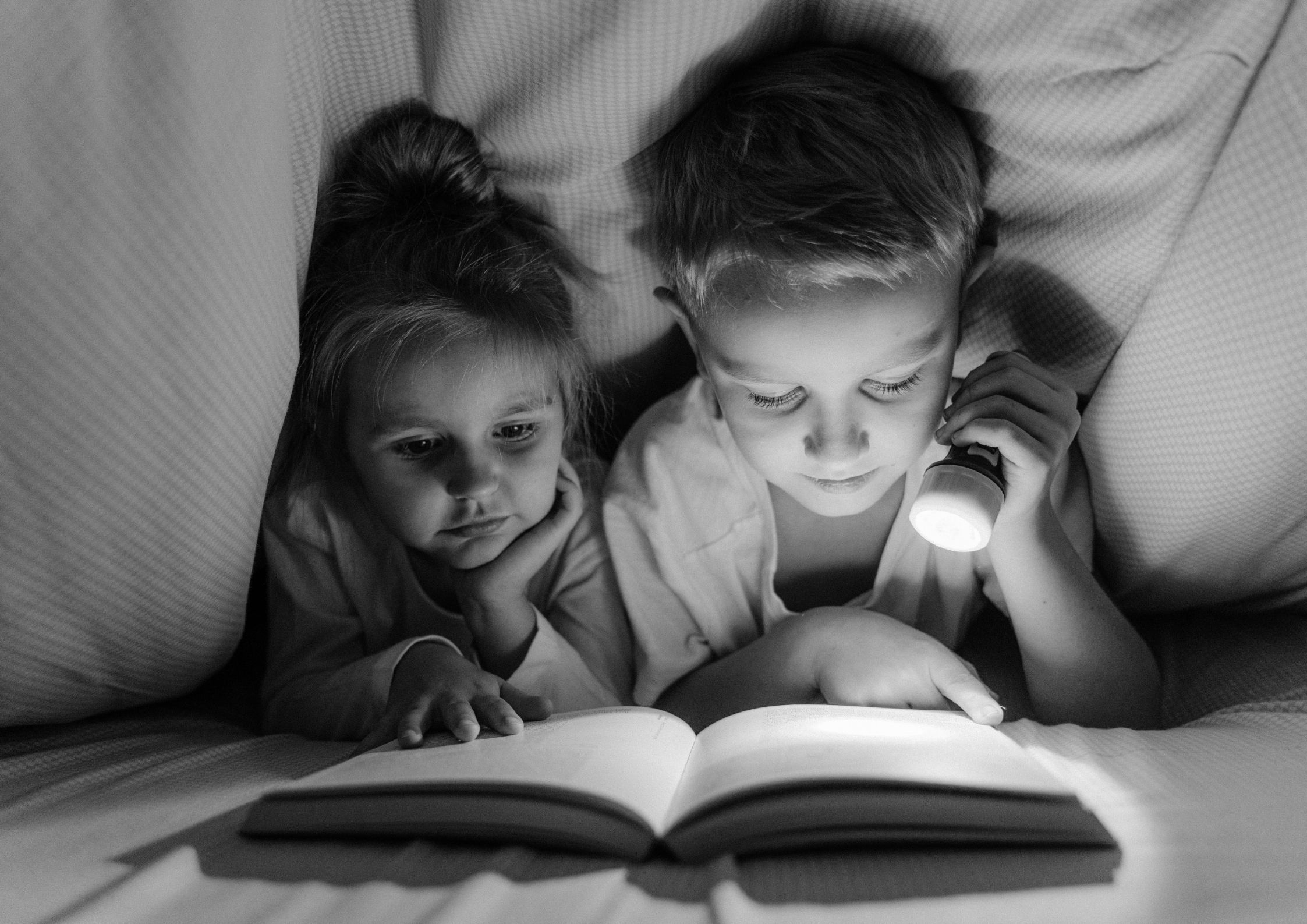
By Dr Nicola Smith, Lecturer in Primary and Early Years Education and Laura Martin, Alumni Relations Manager
School of Education, University of Birmingham
After extended school closures in 2020 due to Coronavirus, there is evidence to show that many older primary and secondary school children have lost their ‘reading stamina’ without the daily reading practice that comes in school. This Christmas we want to take the opportunity to inspire reading with some recommendations for all the family to enjoy.
Reading a book with family by a roaring fire, tree twinkling in the corner, snow falling outside. It’s an image worthy of a festive card, but what is the importance of reading together and why is it extra special at Christmas time?
In their early years, the majority of children begin their reading journey through phonics – understanding sounds so they can decode words. This technical ability isn’t enough in itself for a child to be a confident reader though. It needs to be combined with an understanding of what they are reading and the motivation to do so. That need for understanding and motivation are key reasons why sharing books is so important.
Reading aloud means that children hear language modelled to them and start to understand sounds, rhymes and rhythms. The process of reading together also helps create attachment – that dedicated time in the company of a parent or caregiver builds memories, tradition and familiarity – especially around holidays and special occasions – and can help to anchor a child both emotionally and academically.
In books for very young children – ‘Dear Santa’, by Rod Cambell is a great example at Christmas – bright colours and interactive elements can help the child engage with a book with adult assistance. ‘The Littlest Yak’ by Lu Fraser and Kate Hindley is a lovely recent publication for toddlers, with rhyming text and clear illustrations. For slightly older children, a simple story is combined with detailed illustrations that can be discussed and repeated – ‘Dogger’s Christmas’ by Shirley Hughes or ‘Stickman’ by Julia Donaldson are lovely examples.
As children grow and strive for more independence, reading together doesn’t happen so much, although there is research to say that reading aloud is still very beneficial throughout school life and supports children to carry on as readers.
For older children, Christmas books like ‘The Box of Delights’ by John Masefield or Susan Cooper’s ‘The Dark is Rising’ bring in more evocative language and more complicated plots and dilemmas with a touch of otherworldliness and horror which might make cuddling up together on a Christmas evening seem all the more attractive!
Inclusivity in reading is also really important. For those who are reluctant readers, a graphic novel or non-fiction books can be a brilliant way to encourage reading. A graphic novel of Dickens’ tale ‘A Christmas Carol’ illustrated by David Roach and Terry Wiley might entice older reluctant readers. ‘Weird but True Christmas’ has facts, statistics and pictures to really help children engage with the world around them through reading.
The ability to be able to identify yourself in the story is also important. Increasingly children’s books, and Christmas ones in particular, are showing a more diverse range of protagonists and families, but there is still a long way to go with this. Some lovely current examples at the moment are ‘A Very Noisy Christmas’ by Tim Thorborough and ‘A World of Cookies for Santa’ by M.E. Furman and Susan Gal.
If we are able to encourage and embrace reading and sharing of stories at all ages, we can all help to develop a tradition of reading that can be passed on through families and down generations.
We asked some of our teaching alumni for their Christmas reading recommendations.
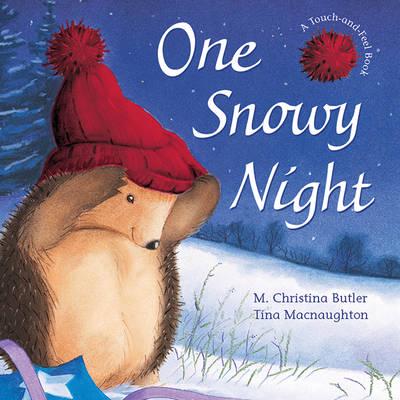 Leanne Camilleri
Leanne Camilleri
(PGCE Primary Education, Early Year, 2020) My story recommendation is ‘One Snowy Night’ by M Christina Butler and Tina Macnaughton. This is a lovely book for 3-5 year olds. A beautiful heart-warming read, it is an endearing Christmas story of friendship and kindness. The textured woolly hat gives an additional sensory element to this book, beautiful!
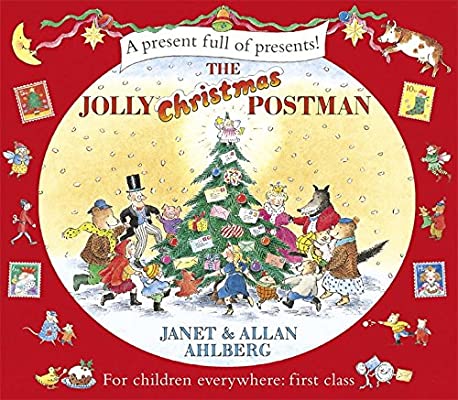 Katie Wynne
Katie Wynne
(BA English, 2014; PGCE, 2015; MA Teaching Studies, 2018) I would recommend ‘The Jolly Christmas Postman’ for any child who is of primary school age. It’s a great Christmas story but the best part is all the little puzzles and pop outs inside. Any child who reads it will love it!
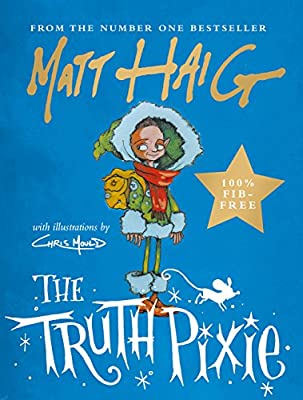 Hannah Keogh
Hannah Keogh
(BA History & Political Science, 2015 ; MSc Global Cooperation & Security, 2016; PGDipEd,2019)‘The Truth Pixie’ by Matt Haig is a wonder to read aloud to children. The story follows a pixie who can only speak the truth, something that worries her as sometimes, people can take this the wrong way. As we follow the pixie, we come to understand her worries and anxieties. The lesson is drawn out that the right people will love and support you, no matter what your truth is. And what a wonderful lesson to share. Matt Haig is my all-time favourite author, both for adults and kids books, so I love to be able to share a writer I adore with my class.
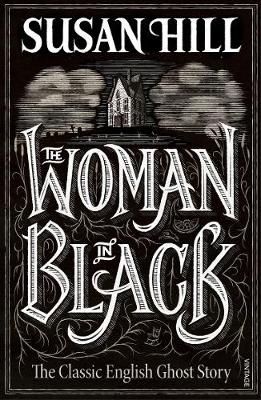 Nathan Duck
Nathan Duck
(PGCE, 1993) ‘The Woman in Black’ by Susan Hill. Not on the face of it a Christmas story, but the narrator recounts his tale on Christmas Eve and so confirms to the tradition of scary stories for Yuletide. For confident (and brave!) readers from age 13 upwards.
We’d love to hear your Christmas book recommendations. Please leave in the comments below.
- More about Dr Nicola Smith
- Find out more about our Alumni Community
- Back to Social Sciences Birmingham

I completely agree with what you have written. I hope this post could reach more people as this was truly an interesting post.
This post was truly worthwhile to read. I wanted to say thank you for the key points you have pointed out as they are enlightening.
I too agree with this blog. Reading is so so important in helping everyone, not just children, in improving their language skills. It is superior to sitting in front of the television, putting one’s mind in neutral and simply watching a programme. When you read, you are often taken to another place because you have to use your imagination to create the environment that has been written. When I lived in China, it was so nice to go into a book shop and see young children, sitting on the floor next to book shelves and read for hours instead of mindlessly playing with their mobile phones. We have to encourage more reading, not just for children but for everyone.